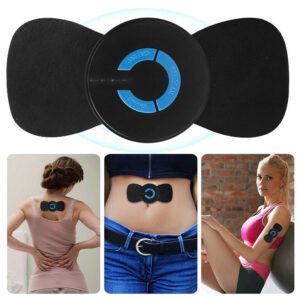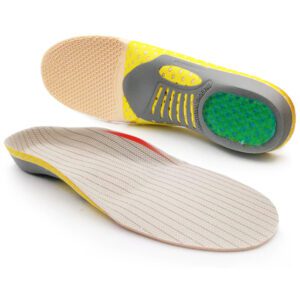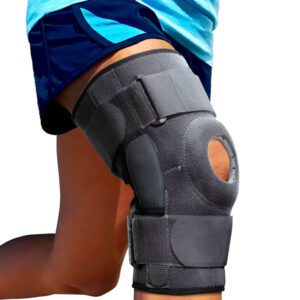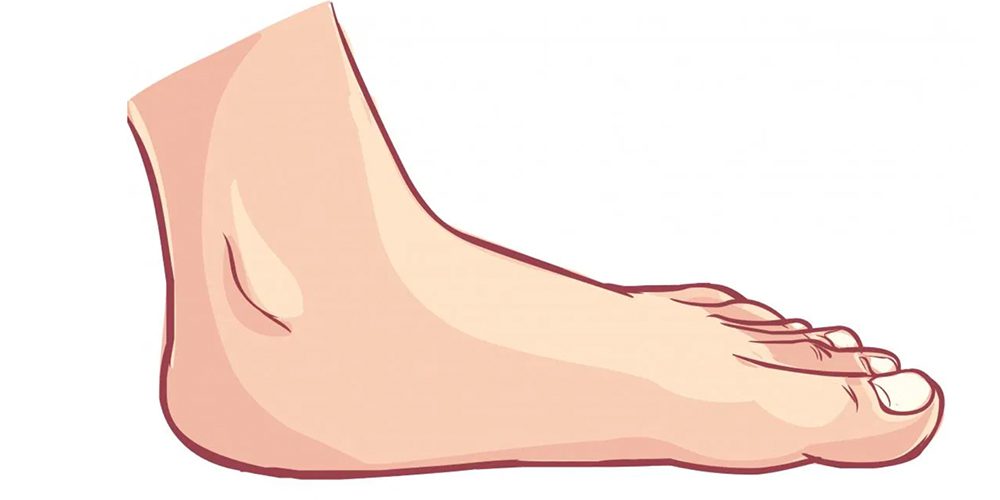Do you suffer from tired, aching legs after a long day? Do your feet swell when you fly or travel? If so, compression socks might be the answer to your prayers. Compression socks come in all shapes and sizes and are made for different purposes. In this blog post, we will discuss the different types of compression socks available, and share some tips on how to choose the right pair for you. We’ll also give you some helpful hints on how to wear and care for your compression socks so that they will last longer.
What are compression socks and what do they do
Compression socks are a type of special hosiery designed to apply gentle pressure to the feet and legs. This pressure is intended to improve blood circulation and reduce swelling.
Compression socks are usually made from a stretchy fabric, such as spandex or nylon, and come in a variety of sizes. They may be knee-high or thigh-high and are often sold in packs of two or three.
While compression socks are typically worn by people with circulatory problems, such as varicose veins or deep vein thrombosis, they can also be worn by healthy adults to improve blood flow during long periods of sitting or standing.

Some people also wear compression socks to help relieve muscle soreness after exercise. If you’re considering buying compression socks, it’s important to choose the right size and style for your needs. You should also consult your doctor if you have any medical conditions that could affect how well compression socks work for you.
Tips for traveling
It’s no secret that travel can take a toll on your body. From cramped airplane seats to hours spent sightseeing, it’s not uncommon to come home feeling exhausted and sore.
Compression socks can help to ease some of these aches and pains by providing targeted support to the legs and feet. The socks work by applying gentle pressure to the muscles and tissue, promoting better blood circulation. This can help to reduce swelling, fatigue, and pain. Additionally, compression socks can also help to prevent deep vein thrombosis (DVT), a condition that can occur when blood clots form in the veins.
Here are the top tips and tricks for traveling with compression socks:
Pack them in your carry-on bag. Don’t risk having your compression socks lost or damaged in checked luggage. Keep them with you in your carry-on bag so you can always have them at hand.
Wear them on the plane. compression socks can help to reduce swelling and pain during long flights. Be sure to put them on before takeoff and take them off as soon as you land.
Pack more than one pair. No matter how well you plan, there’s always a chance that your compression socks will get lost or damaged while you’re traveling. Pack at least two pairs so you have a backup.
Choose the right style. compression socks come in a variety of styles, including knee-high, ankle-length, and thigh-high. Choose the style that will be most comfortable for you based on your planned activities.
Thigh-high compression socks are great for long flights, while ankle-length socks are more versatile and can be worn for a variety of activities.
Don’t forget to pack a compression sock liner. Compression sock liners are thin, comfortable socks that provide an extra layer of protection between your skin and the compression sock. This can help to reduce irritation and discomfort.
Switch positions as often as possible. When traveling by plane, try to get up and walk around as often as possible. This will help to keep your blood flowing and reduce the risk of DVT.
Wear compression socks while sightseeing. If you’ll be doing a lot of walking while sightseeing, compression socks can help to reduce fatigue and pain. Be sure to pack a pair in your day bag so you can put them on when you need them.
Take them off at the end of the day. compression socks should be worn for no more than eight hours at a time. Be sure to take them off before going to bed to give your feet and legs a break.
Tips and tricks for proper care
Here are our top tips and tricks around the proper care for your compression socks:
Wash your compression socks after each wear. This will help prevent bacteria and fungus from building up on the fabric.
Use a mild detergent when washing your compression socks. Avoid using fabric softeners, as they can damage the fibers.
Be sure to air dry your compression socks. Do not put them in the dryer, as this could damage the elasticity of the fabric.
If you notice any holes or tears in your compression socks, replace them immediately. Wearing damaged socks could lead to skin irritation or infection.
Store them properly. When not in use, compression socks should be stored in a cool, dry place out of direct sunlight. If they become wrinkled, you can gently stretch them back into shape.
How to wear compression socks like a pro
Wearing compression socks is not just for athletes or people recovering from surgery. In fact, many people can benefit from wearing compression socks on a daily basis. Here are a few tips on how to wear compression socks like a pro:
1. Choose the right size. Compression socks should fit snugly but not be so tight that they cause discomfort. If you’re not sure what size to get, ask a salesperson for help or consult a size chart.
2. Put them on in the morning. Compression socks work best when they’re worn for several hours at a time, so it’s best to put them on in the morning before you start your day.
3. Take them off before bed. Be sure to take off your compression socks before going to bed so you don’t cut off circulation to your feet overnight.
4. Wear them with comfortable shoes. Wearing compression socks with shoes that are too tight can cause discomfort, so be sure to wear them with shoes that have plenty of room to accommodate the socks.
5. Wash them regularly. Compression socks can get sweaty, so be sure to wash them often to keep them clean and comfortable.
6. Wear them in style. There’s no need to sacrifice style when wearing compression socks. Gone are the days when you could only buy beige, skin-colored socks. Nowadays they’re available in all the colors of the rainbow, funny prints or even in stylish stripes. So go ahead and show your personality while wearing compression socks.
Choose the right type for your situation
There are many different types of compression socks on the market, and it can be difficult to know which one is right for you.
Different socks offer different levels of compression, and they can be made from different materials. If you have a medical condition that requires you to wear compression socks, be sure to check with your doctor before making a purchase. However, if you’re simply looking for a pair of compression socks to improve your performance during exercise, there are a few things you’ll want to keep in mind.

First, consider the level of compression you need. If you’re looking for general support, a low-compression sock should suffice. However, if you have a specific injury or condition that requires more support, you’ll want to choose a higher-compression sock.
Second, think about the material the sock is made from. If you plan on wearing the sock for extended periods of time, you’ll want something that’s comfortable and breathable.
Finally, consider the price. Compression socks can range in price from $10 to $100 or more, so it’s important to find something that fits within your budget. By keeping these factors in mind, you can be sure to find the perfect pair of compression socks for your needs.
Tips to put them on and off way easier
Wearing compression socks is a simple and effective way to improve your circulation, but putting them on and taking them off can be a bit of a challenge. Here are a few tips to make the process easier:
-First, make sure that your socks are the right size. They should be snug but not too tight, and they should reach from your foot to just below your knee.
-To put them on, start at the foot and work your way up. It may help to use a sock aid or other device to hold the sock in place.
-Once the sock is in place, gently roll it up towards your knee. Be careful not to roll it too tightly, as this could cut off circulation.
-To take the socks off, start at the top and gently roll them down. Again, be careful not to roll them too tightly.
-Cream or lotion can help to ease the process of putting on and taking off compression socks. Apply a small amount to your feet before putting on the socks, and be sure to wash it off afterward.
-Consider putting them on immediately after waking up in the morning when still lying in bed. That way you ensure that your legs are not swollen yet from being upright all day.
-When taking them off in the evening, have a chair or stool nearby to sit on so you don’t have to put all your weight on your compression socks.
-Use a special device to help with putting on the socks. These devices, known as compression sock aids, can be purchased online or at medical supply stores.
-Make sure your legs and feet are not wet when trying to put on the socks. This will make the process more difficult and could lead to irritation.
Sizing – Hit or Miss
When you’re standing on your feet all day, they can swell and cause discomfort. Wearing compression socks can help reduce swelling and pain. But how do you know which size and compression level are right for you?
The first step is to measure your calf circumference. You can do this by wrapping a tape measure around the widest part of your calf. Once you have your calf circumference, you can consult a sizing chart to find the right sock size.
Next, you need to decide on the level of compression you need. Compression socks are available in different levels of compression, measured in millimeters of mercury (mmHg). A general guideline is that mild compression is between 10-15 mmHg, moderate compression is between 15-20 mmHg, and firm compression is above 20 mmHg. If you’re not sure which level is right for you, talk to your doctor or a certified fitter.
Finally, consider the style of compression sock that you prefer. Compression socks come in different lengths, ranging from ankle-length to thigh-length. They also come in different materials, such as nylon, spandex, and cotton. Choose a style that you’ll be comfortable wearing all day.
Compression socks are a great way to improve circulation and reduce swelling, but it’s important to make sure you choose the right size and compression level. With so many options available, it can be daunting to know where to start. But by following these simple tips, you can find the perfect pair of compression socks for you.
Do you have any compression socks tips or tricks that we didn’t mention? Share them in the comments below! And be sure to check out our compression socks buying guide for more information on choosing the right pair of socks for you.





















